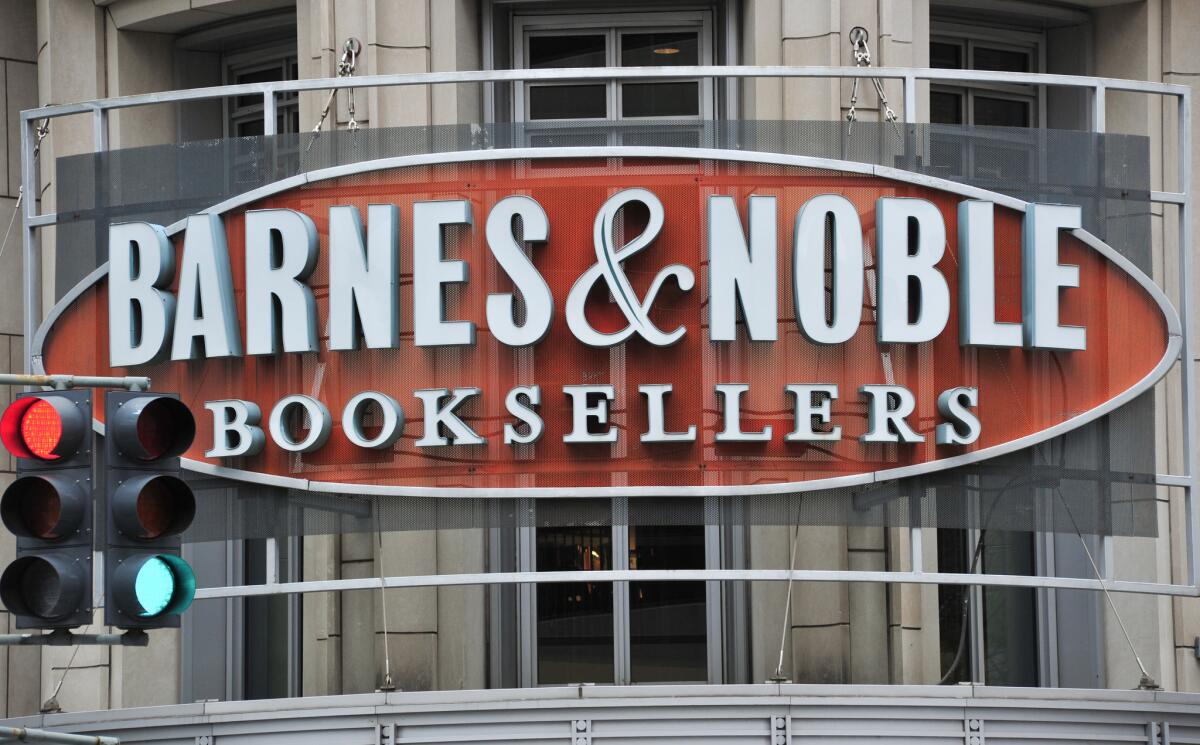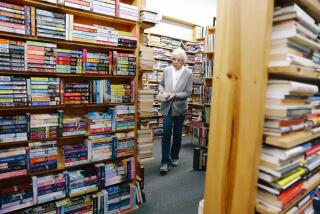The incredible shrinking Barnes & Noble

Big box bookstores such as Barnes & Noble were once considered a major threat to the health of the book-selling industry, offering discounts, massive selections and lattes that independent bookstores could not. Now things have changed: Barnes & Noble is the last national bookstore chain standing, and it’s getting smaller ... and smaller ... and smaller.
In 2008, Barnes & Noble had 726 stores. It currently has 689 stores and in 10 years, it plans to have just 450 to 500.
That’s what Mitchell Klipper, chief executive of Barnes & Nobkle’s retail group, told the Wall Street Journal. In an article published Monday, Klipper said that Barnes & Noble would ramp up closures of existing stores while significantly cutting back on opening new ones, making for a loss of an average of 20 retail stores per year.
While that explains the numbers, it doesn’t really address the underlying issue -- the growing importance of e-books, which are generally seen as threatening traditional brick-and-mortar retail sales. Barnes & Noble’s chief rival, Borders, went bankrupt and was liquidated in 2011.
Print sales fell 9% last year, while e-book sales continue to rise. Many digital watchers -- including an unnamed publisher quoted in the WSJ piece -- have predicted that e-books will soon reach 50% of total book sales in the U.S.
“The next two years will go a long way in defining the bookseller’s future, by clarifying how fast the print market is shrinking,” writes Jeffrey Trachtenberg at the WSJ. “Bertelsmann SE & Co.’s Random House, the world’s largest publisher of consumer books, says e-books now make up about 22% of its global sales, up from almost nothing five years ago.”
Of course, Barnes & Noble doesn’t sell only print books. It developed the Nook e-reader and tablet, for which it sells e-books from its website. And most people who read e-books also read print books -- 88% did of those Pew talked to for its “The Rise of e-Reading” survey.
Barnes & Noble’s retail stores do sell the Nook, but that’s not what Klipper points to as setting the chain apart. He told the Wall Street Journal that less than 3% of the company’s stores lose money -- because they’re a destination for people in a way other retailers aren’t. “You go to Barnes & Noble to forget about your everyday issues, to stay awhile and relax,” he says. Shopping for, say, kitchen appliances is a different experience. “When you go to Bed Bath & Beyond, you don’t sit down on the floor and curl up with your blender and your kid.”
Striking a balance between cozy family reading time and the convenience of e-books is the challenge Barnes & Noble must face -- even as it has fewer sites to get it right.
ALSO:
200 Years of Jane Austen’s Pride and Prejudice
Fate of Timbuktu manuscripts uncertain as library burns
What’s happening to CalArts’ literary journal Black Clock?
Carolyn Kellogg: Join me on Twitter, Facebook and Google+
More to Read
Sign up for our Book Club newsletter
Get the latest news, events and more from the Los Angeles Times Book Club, and help us get L.A. reading and talking.
You may occasionally receive promotional content from the Los Angeles Times.







